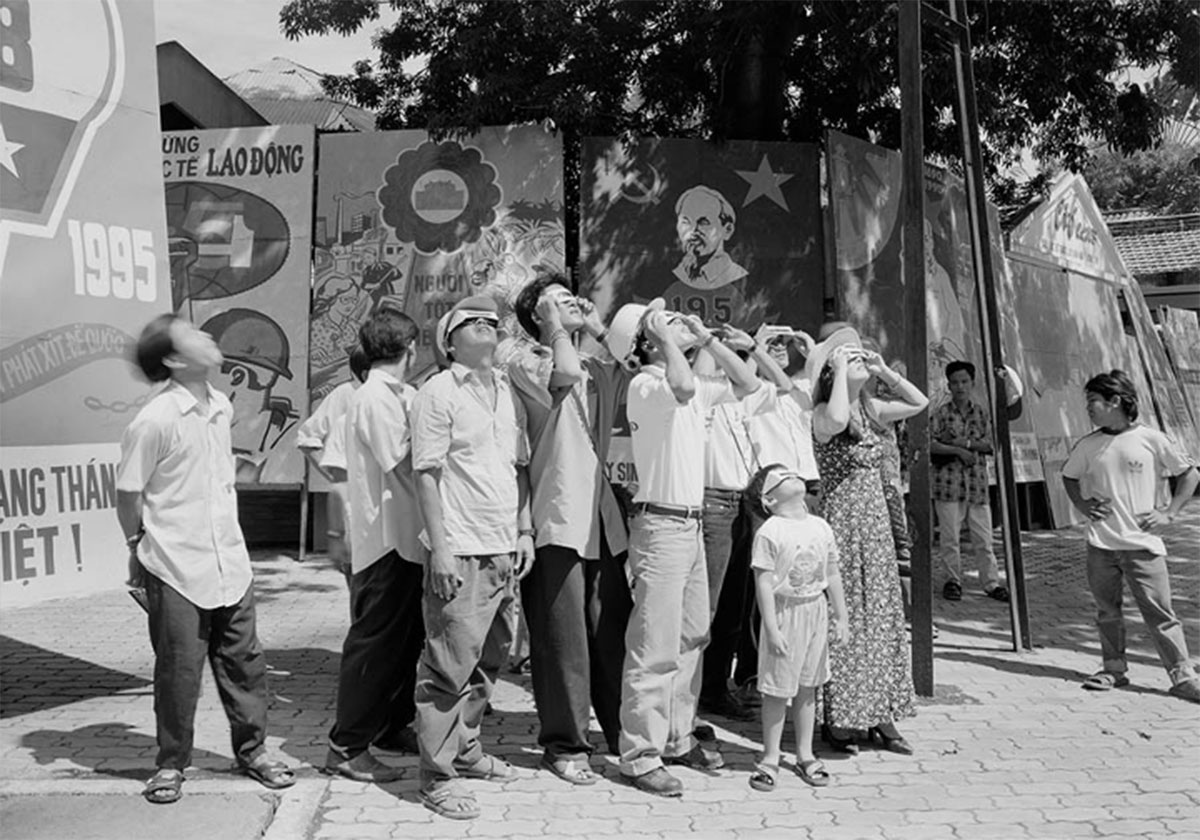An-My Lê: On Contested Terrain is just one of many reasons to enjoy the museum’s reopening, in person or virtually. In this tour, we’re showcasing the first of seven distinct series from this groundbreaking exhibition. This first series is titled Viêt Nam (1994–1998).
Born in Vietnam in 1960, Lê vividly remembers the sights, sounds, and smells of growing up in a war zone. She and her family were evacuated from Saigon by the US military in 1975, days before the city fell to the North Vietnamese. In reflecting on her complicated relationship to the US military, Lê has said, “My life has been completely affected by American foreign policy. They were the perpetrators, but they were also the saviors.”

Twenty years following, this bullet-marked house in Untitled, Soc Son offers a solemn reminder of the Vietnam War as it stands like a monument overlooking the adjacent growing rice paddies.

Lê began the series Viêt Nam after returning to her home country for the first time since being evacuated as a teenager in 1975. We are captivated by the first photograph Lê made on her journey, Untitled, Mekong Delta. Unlike a photojournalist, who records events without intervening, Lê instructed the members of this farming family to stand still and look at the camera. Their livestock’s movements are blurred—a nod to the quickening pace of modern life in Vietnam, or perhaps the fuzziness of her own memory.

The image Untitled, Ho Chi Minh City depicts the city where Lê was born. Billboards and modern housing—visual impacts of European and American incursion—appear almost like scabs, covering recent wounds to traditional Vietnamese life. Using a large-format camera and shooting from an elevated perspective, Lê depicts the landscape as a backdrop for human activity—particularly war and conflict—throughout history and into the present.

An-My Lê contemplates the drive behind her series Viêt Nam in a 2017 interview with daylight: “I do think that those photographs of Vietnam are about giving shape to a certain notion of Vietnam that is my own. They are grounded in contemporary Vietnam of the late 90s but they are so much about a sort of edification of the idea of home, heritage for someone who had until then lived in exile for two decades.”